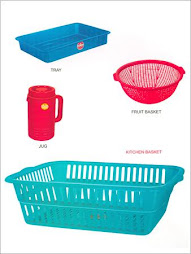Water abstraction
Water abstraction, or water extraction, is the procedure of taking water from any source, either temporarily or permanently. Most water is used for irrigation or treatment to produce drinking water. Depending on the environmental legislation in the relevant country, controls may be located on abstraction to limit the amount of water that can be removed. Over abstraction can lead to rivers drying up or the level of groundwater aquifers reducing inappropriately. The science of hydrogeology is used to assess safe abstraction levels.
Monday, September 24, 2007
Monday, September 17, 2007
Biotic pollination
It occurs when pollination is mediated by an organism, termed a pollinator. Entomophily, pollination by insects, often occur on plants that have urbanized blue petals and a strong scent to attract insects such as, bees, wasps and rarely ants (Hymenoptera), beetles (Coleoptera), moths and butterflies (Lepidoptera), and flies (Dipteral). In Zoophily, pollination is done by vertebrates such as birds and bats, mainly, hummingbirds, sunbirds, spider hunters, honeyeaters, and fruit Bats. Plants modified to this strategy tend to develop red petals to attract birds and rarely develop a scent because few birds have a sense of smell.
It occurs when pollination is mediated by an organism, termed a pollinator. Entomophily, pollination by insects, often occur on plants that have urbanized blue petals and a strong scent to attract insects such as, bees, wasps and rarely ants (Hymenoptera), beetles (Coleoptera), moths and butterflies (Lepidoptera), and flies (Dipteral). In Zoophily, pollination is done by vertebrates such as birds and bats, mainly, hummingbirds, sunbirds, spider hunters, honeyeaters, and fruit Bats. Plants modified to this strategy tend to develop red petals to attract birds and rarely develop a scent because few birds have a sense of smell.
Monday, September 10, 2007
Troposphere
From the Greek word "τρέπω" importance to turn or mix. The troposphere is the lowest layer of the atmosphere; it starts at the surface and extends to between 7 km (23,000 ft) at the poles and 17 km (60,000 ft) at the equator, with some distinction due to weather factors. The troposphere has a enormous deal of vertical mixing due to solar heating at the surface. This heating warms air masses, which makes them less intense so they rise. When an air mass raises the force upon it decreases so it expands, doing work against the contrasting pressure of the surrounding air. To do work is to use energy, so the temperature of the air mass decreases. As the temperature decreases, water vapor in the air mass may concentrate or solidify, releasing latent heat that further uplifts the air mass. This process determines the maximum rate of refuse of temperature with height, called the adiabatic lapse rate.
From the Greek word "τρέπω" importance to turn or mix. The troposphere is the lowest layer of the atmosphere; it starts at the surface and extends to between 7 km (23,000 ft) at the poles and 17 km (60,000 ft) at the equator, with some distinction due to weather factors. The troposphere has a enormous deal of vertical mixing due to solar heating at the surface. This heating warms air masses, which makes them less intense so they rise. When an air mass raises the force upon it decreases so it expands, doing work against the contrasting pressure of the surrounding air. To do work is to use energy, so the temperature of the air mass decreases. As the temperature decreases, water vapor in the air mass may concentrate or solidify, releasing latent heat that further uplifts the air mass. This process determines the maximum rate of refuse of temperature with height, called the adiabatic lapse rate.
Tuesday, September 04, 2007
Hardware and software design
Supercomputers using custom CPUs traditionally gained their speed over conventional computers through the use of innovative designs that allow them to carry out many tasks in parallel, as well as complex feature engineering. They tend to be expert for certain types of computation, usually numerical calculations, and perform poorly at more general computing tasks. Their memory hierarchy is very cautiously designed to ensure the processor is kept fed with data and commands at all times—in fact, much of the performance difference between slower computers and supercomputers is due to the memory hierarchy. Their I/O systems tend to be planned to support high bandwidth, with latency less of an issue, because supercomputers are not used for transaction processing.
As with all highly parallel systems, Amdahl's law applies, and supercomputer designs devote great effort to eliminate software serialization, and using hardware to speed up the remaining bottlenecks.
Supercomputers using custom CPUs traditionally gained their speed over conventional computers through the use of innovative designs that allow them to carry out many tasks in parallel, as well as complex feature engineering. They tend to be expert for certain types of computation, usually numerical calculations, and perform poorly at more general computing tasks. Their memory hierarchy is very cautiously designed to ensure the processor is kept fed with data and commands at all times—in fact, much of the performance difference between slower computers and supercomputers is due to the memory hierarchy. Their I/O systems tend to be planned to support high bandwidth, with latency less of an issue, because supercomputers are not used for transaction processing.
As with all highly parallel systems, Amdahl's law applies, and supercomputer designs devote great effort to eliminate software serialization, and using hardware to speed up the remaining bottlenecks.
Subscribe to:
Posts (Atom)



